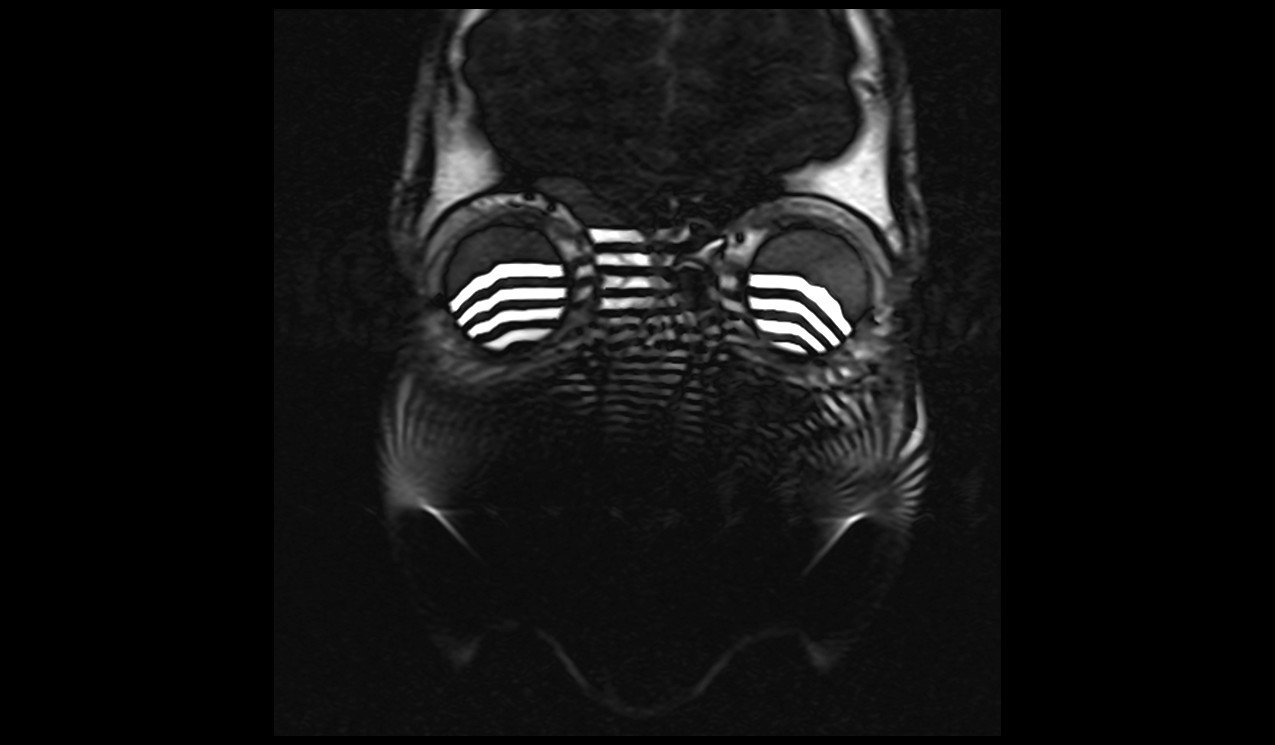Zebra Artifact / Zebra Stripes
The “zebra” artifact, frequently referred to as the ” Zebra stripes” or “striping artifact,” is a phenomenon observed in MRI characterized by a distinctive pattern of alternating light and dark stripes or bands on the image. These stripes can be mainly seen at the periphery of the MRI image, presenting as curved bright and dark bands. However, the inhomogeneity of the magnetic field, in combination with aliasing, can sometimes also produce a centrally located artifact.
The genesis of the zebra artifact is multifaceted. It can emerge due to the inhomogeneity of the main magnetic field, as well as from the wrap-around or aliasing of signals from areas outside the coil that play a role in image formation. This specific phenomenon where signals from outside the intended field-of-view contribute to artifact formation is also known as the Moiré fringe artifact.
The primary causes or sources of the zebra artifact include:
Gradient Nonlinearity: This is one of the most common causes of zebra artifacts. The gradients used to encode spatial information in the MRI scanner might not be perfectly linear, causing distortions in the spatial encoding of the signal.
Magnetic Field Inhomogeneity: Variations or inhomogeneities in the magnetic field can lead to inconsistencies in the signal, resulting in striped artifacts.
RF Coil Malfunctions: Problems with the radiofrequency (RF) coil, such as improper tuning or hardware malfunctions, can produce uneven signal reception, leading to zebra artifacts.
Hardware-related issues: Imperfections in the gradient coil can lead to these striping patterns. These coils are critical for spatially encoding MRI signals, and any inconsistency can manifest as artifacts.
Calibration and algorithm issues: The malfunction or incorrect calibration of correction algorithms, particularly those designed to correct gradient non-linearity, can introduce the zebra artifact.
Radiofrequency (RF) Coil Malfunction related Zebra Artifact

Magnetic Field Inhomogeneity related Zebra Artifact

Here are some strategies to minimize or avoid Zebra Artifact :
Calibration: One of the foremost steps involves checking and recalibrating the gradient non-linearity correction system. Regular maintenance and calibration can ensure that the system works optimally and minimizes artifacts.
Repeat Scans: If the artifact appears in random slices or is inconsistent across scans, it might be beneficial to repeat the MRI scan. This ensures that transient causes, like slight patient movements, are not the source of the artifact.
Adjusting Field of View (FOV): The moirés fringe artifact can be attenuated by reducing the FOV. By adjusting the FOV, one can minimize the contribution of signals from areas outside the primary imaging region, thereby reducing the chance of aliasing and the appearance of the zebra artifact.
References:
- Alfudhili, K., Masci, P. G., Delacoste, J., Ledoux, J.-B., Berchier, G., Dunet, V., Qanadli, S. D., Schwitter, J., & Beigelman-Aubry, C. (2016). Current artefacts in cardiac and chest magnetic resonance imaging: tips and tricks. British Journal of Radiology, 89(1062), 20150987. doi:10.1259/bjr.20150987
- Mohammed, S., & Abubakar, M. (2020). Evaluation of MRI Artifact in some selected centers in Kano Metropolis, Nigeria. Afr Health Sci, 20(4), 1831–1839. doi:10.4314/ahs.v20i4.38


